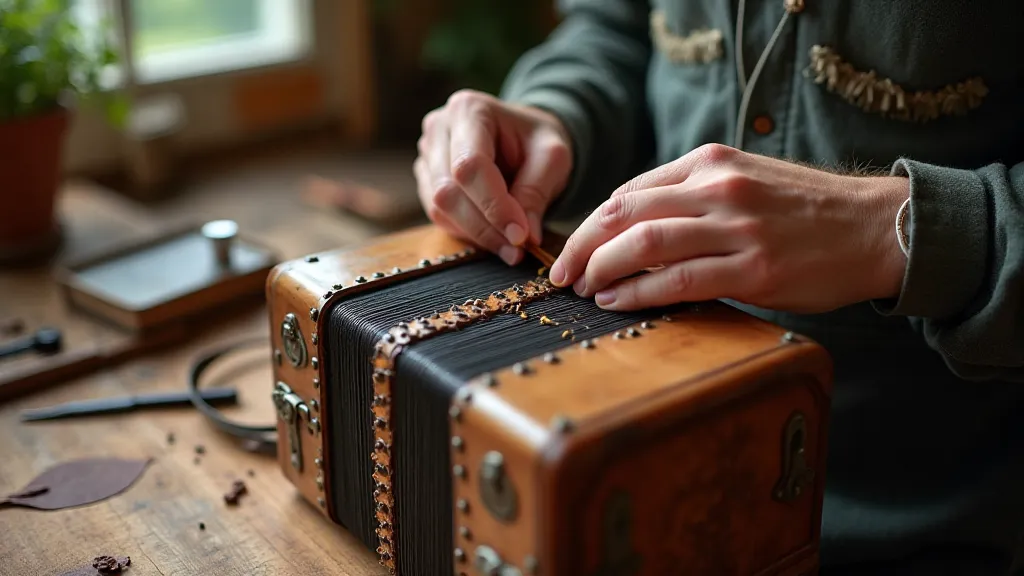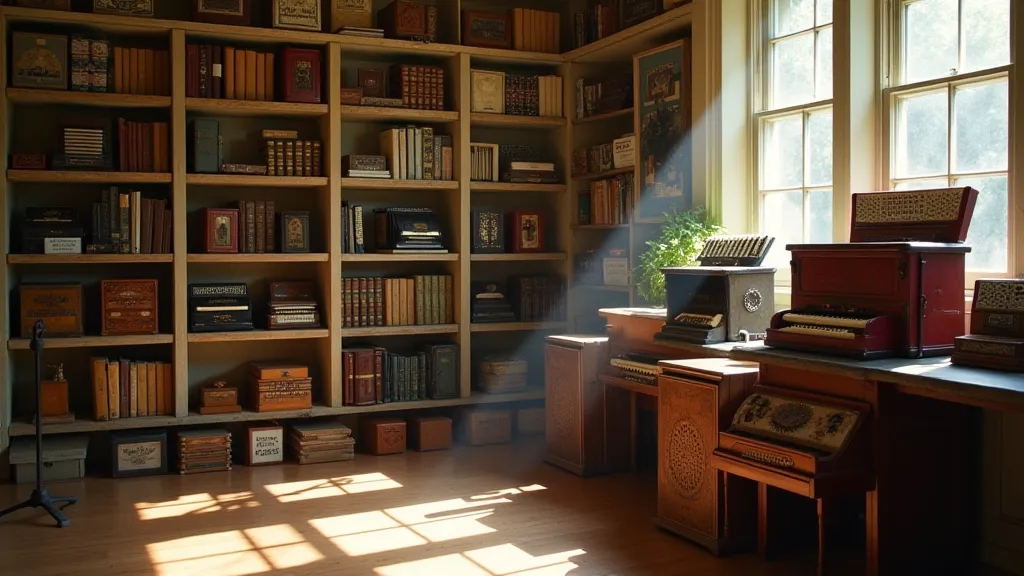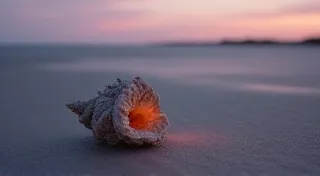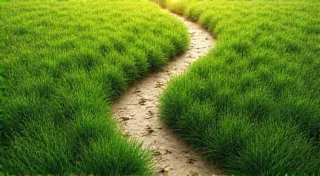The Alchemist's Hearth: Transforming Waste into Resourceful Grace
The scent of aged wood and brass hangs heavy in the air, a comforting aroma that speaks of forgotten melodies and enduring craftsmanship. I’m surrounded by accordions – antique instruments, each bearing the patina of time and the echoes of countless performances. Many were once destined for the landfill, deemed irreparable, their value reduced to scrap metal. But within each broken bellows, each tarnished key, lies a latent potential, a story waiting to be resurrected. This isn't just about fixing an instrument; it’s about embodying a philosophy – the alchemy of sustainable living.
The term “waste” itself is a relatively modern concept. For centuries, societies operated within a predominantly circular economy. Everything had a purpose, a value. Scraps fed animals, worn fabric became patches, and broken tools were repaired, not replaced. This wasn’s a conscious effort at sustainability as we understand it today, but a pragmatic necessity. Resources were finite, and ingenuity was the key to survival. Think of the intricate marquetry used to repair broken furniture, the resourcefulness of using every part of an animal, the passing down of skills from generation to generation - a tangible embodiment of minimizing waste. This resonates deeply with the principles we’re exploring today, prompting us to rethink our consumption and move towards a more mindful approach.

The Echoes of Alchemy
The alchemists of old sought to transmute base metals into gold, a process symbolizing spiritual transformation and understanding the underlying unity of all things. They observed the natural world, experimenting with materials and processes, searching for hidden connections. While their pursuit of literal transmutation ultimately proved elusive, their quest for knowledge and their profound respect for the interconnectedness of matter resonates deeply with the principles of sustainable living. Isn’t finding beauty and value in what others discard a form of alchemy in itself? Turning what society has deemed “waste” into a source of joy, utility, and even art?
Consider the act of repairing an accordion. It’s a meticulous process, requiring patience, skill, and an appreciation for the instrument's history. Each component – the reeds, the keys, the bellows – has a story to tell. To restore an accordion is to become a temporary custodian of that history, to breathe new life into a piece of art that would otherwise be lost. It’s a profoundly satisfying act, a testament to human ingenuity and the enduring power of craftsmanship. The principles involved in this restoration are surprisingly similar to those we use in other areas of sustainable living, such as choosing durable goods over fleeting trends. In fact, if you’re looking for actionable steps to reduce your environmental footprint, you could start by simply considering the longevity of your purchases.
Beyond Recycling: Embracing the Circular Economy
Recycling is undoubtedly important, but it’s only one piece of the puzzle. True sustainability lies in minimizing waste at its source, embracing the principles of a circular economy. This means not just sorting our plastics and paper, but fundamentally rethinking our consumption habits. It's about buying less, choosing durable products, and prioritizing repair over replacement. The allure of fast fashion, for example, can be a significant contributor to waste. Understanding the truth about fast fashion and its detrimental impact is the first step in making more conscious choices as a consumer.
Composting is a prime example of this circularity. Food scraps and yard waste, which would otherwise end up in landfills, are transformed into nutrient-rich soil, nourishing gardens and reducing the need for synthetic fertilizers. Similarly, upcycling – transforming discarded materials into new products – allows us to extract value from what would otherwise be lost. A discarded shirt can become tote bags, old furniture can be repurposed into unique home décor, and broken electronics can be scavenged for valuable components.
The Art of Repair: A Lost Skill Rediscovered
The decline of repair culture is a lamentable trend. For generations, passing down the skills of mending, fixing, and restoring was an integral part of family life. Today, however, many people lack the basic skills needed to repair even the simplest items. This dependence on disposable products has fostered a culture of wastefulness and diminished our connection to the materials that surround us. Consider the simple act of cleaning – many conventional cleaning products contain harsh chemicals that are detrimental to both our health and the environment. Exploring beginner's guide to eco-friendly cleaning can provide simple swaps for a healthier home and planet.
Fortunately, there's a growing movement to revive the art of repair. Repair cafes are popping up in communities around the world, offering workshops and guidance on mending clothes, fixing electronics, and restoring antique furniture. Online communities and tutorials are also providing valuable resources for those seeking to learn these lost skills. Learning to mend a ripped seam or repair a broken appliance isn't just about saving money; it’s about reclaiming agency over our consumption habits and fostering a deeper appreciation for the craftsmanship that goes into the things we own.

Conscious Consumption: A Philosophical Shift
Ultimately, sustainable living isn’t just about adopting specific practices; it’s about cultivating a philosophical shift in our perspective. It's about recognizing that we are not separate from the natural world, but an integral part of it. Every action has consequences, and it is our responsibility to minimize our impact on the planet.
Conscious consumption requires us to question our motivations for purchasing goods. Do we truly *need* that new gadget, or are we simply succumbing to marketing pressure? Are we buying quality products that will last, or cheap, disposable items that will end up in the landfill within a few months? By making informed choices and prioritizing durability and longevity, we can significantly reduce our environmental footprint. It’s a move away from a mindset of constant acquisition and toward a mindful appreciation of what we already have, fostering a sense of contentment and responsibility.
Harnessing the Sun: A Symbiotic Future
The transition to a truly sustainable future requires more than just individual action; it necessitates a fundamental shift in our energy infrastructure. We can no longer rely on finite, polluting resources. The potential of renewable energy, particularly solar power, is immense. Exploring innovative approaches like decentralized solar farms, or solar bloom, offers a vision of a more equitable and sustainable energy future, one where communities can generate their own power and reduce their reliance on centralized grids.
Water as a Precious Resource
Closely tied to energy sustainability is the responsible management of water resources. Freshwater is becoming increasingly scarce in many parts of the world, and conservation is essential for protecting this precious commodity. Simple changes in our daily habits, from shorter showers to efficient irrigation techniques, can make a significant difference. Learning about water conservation at home can provide practical strategies for minimizing water usage and preserving this vital resource for future generations.
The Gold Within
The alchemy of sustainable living isn't about turning lead into gold; it's about recognizing the inherent value in what already exists. It's about seeing the potential in discarded materials, the beauty in imperfection, and the interconnectedness of all things. It’s about embracing the art of repair, the principles of circularity, and the philosophy of conscious consumption. The skills and knowledge passed down through generations offer valuable insights into how to live in harmony with the earth, reducing waste and promoting resilience.
Just as the alchemists sought to unlock the secrets of the universe, we too can unlock the potential within ourselves to create a more sustainable and harmonious world. And like the enduring melodies resonating from a meticulously restored accordion, the rewards are immeasurable - a deep sense of purpose, a connection to the past, and a profound appreciation for the resourceful grace of living in harmony with the earth.






